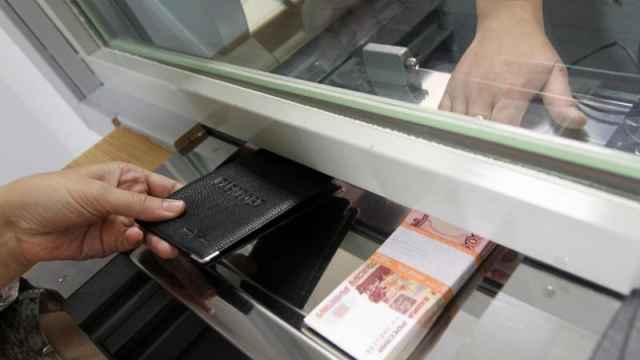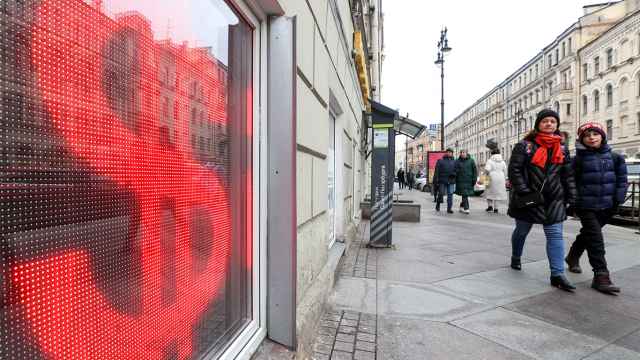Debtors are rushing to repay overdue loans and paying down debt in larger increments, according to data provided by Sequoia Credit Consolidation.
The average payment on auto loans has risen by 66 percent since early 2016, by 22 percent for credit card debt, by 29.5 percent on cash loans, and by 19.4 percent on POS loans. In fact, the average payment has nearly reached pre-crisis levels.
Sequoia President Yelena Dokuchayeva explained that the increase
is due to greater economic stability – lower inflation, a stronger
ruble, and an end to falling wages — and also to increased
financial literacy among the population, and to debtors realizing
that eventually they will have to pay off their debts in full. She
added that many current borrowers plan to take out major loans for
cars, apartments, tracts of land, home remodeling, and higher
education, and are eager to pay down current debt as quickly as
possible in order to qualify for new loans.
Alexander Savinov, deputy president of collection agency Sentinel
Credit Management, a subsidiary of Alfa Bank, notes slightly
different figures for the average increase in credit payments since
the beginning of the year: 45 percent — 50 percent on auto loans,
10 percent on credit cards and 15 percent on cash loans. However, he
attributed the rise to a less optimistic cause: “Debtors now have
some money in hand and want to repay a large part of their debt as
quickly as possible because most have no confidence that they’ll
have such an opportunity later,” he said.
The collection of arrears on credit card debt increased by 44
percent from the second to third quarters this year, and by 17
percent on consumer loans, according to Dmitry Teplitsky, CEO of
collections agency Active Business Collections (ABC), a subsidiary of
Sberbank. He added that the agency did not see a sudden increase in
the size of repayments. At the same time, it did note that buying
power remained as high as it had been at the beginning of the year,
although the agency had expected it to drop in the second half of the
year when people allocate most of their incomes to summer vacations.
Teplitsky does not anticipate that payments will rise in the future
because neither the economy nor real incomes are growing. At the same
time, he said, collections are traditionally highest in the fourth
quarter.
“Many borrowers postponed making payments during the first half
of the year in the hope that collection agencies would be banned,”
explained NAPKA first vice president Alexander Morozov. He said the
State Duma had considered 12 bills connected with the collections
market, that the Kuzbass region had already banned collections
agencies, that rumors
circulated of plans to introduce debt amnesty, and so on. And after
each such prominent media report, borrowers kept a lower profile and
decreased the size of their payments for a time. However, the
adoption of the law, “On protection of the rights of individuals
during the collection process,” in July 2016 decisively legitimized
the work of collection agencies in the public mind and convinced
borrowers that collection agencies would not disappear and that they
would have to repay their debts, Morozov said.
“We see a certain improvement in the situation with debtors that
have gone into arrears, and especially with those with relatively
little back debt,” noted Loko Bank deputy chairman Andrei Lyushin.
Payments have risen by 7 percent to 10 percent as clients attempt to
return to a normal payment schedule as quickly as possible, he said.
However, it would be wrong to conclude that the situation is
stabilizing completely because the number of overdue loans is
growing, Lyushin said.
The United Credit Bureau (UCB) regards the statistics from
collection agencies with some skepticism. “We analyzed the data on
payments that borrowers made on loans and did not see such a trend,”
said a UCB representative. “The size of the average payment is
decreasing, as is the size of the average loan.” The average loan
size is decreasing because the overall volume of issued loans
decreased from 2014 to 2015.
The size of debt payments might have increased because lenders
learned to combine multiple loans issued to a single borrower into a
single consolidated loan, suggests National Credit History Bureau
marketing director Alexei Volkov. In place of several loans, the
borrower has only one. In this way, he makes fewer payments overall,
and each one is larger than before. Collection agencies and lenders
both make use of this practice. However, Dokuchayev insists that the
statistics from various loan segments proves that the size of
confirmed payments has increased, without taking into account the
effect of consolidated loans.
A Message from The Moscow Times:
Dear readers,
We are facing unprecedented challenges. Russia's Prosecutor General's Office has designated The Moscow Times as an "undesirable" organization, criminalizing our work and putting our staff at risk of prosecution. This follows our earlier unjust labeling as a "foreign agent."
These actions are direct attempts to silence independent journalism in Russia. The authorities claim our work "discredits the decisions of the Russian leadership." We see things differently: we strive to provide accurate, unbiased reporting on Russia.
We, the journalists of The Moscow Times, refuse to be silenced. But to continue our work, we need your help.
Your support, no matter how small, makes a world of difference. If you can, please support us monthly starting from just $2. It's quick to set up, and every contribution makes a significant impact.
By supporting The Moscow Times, you're defending open, independent journalism in the face of repression. Thank you for standing with us.
Remind me later.






